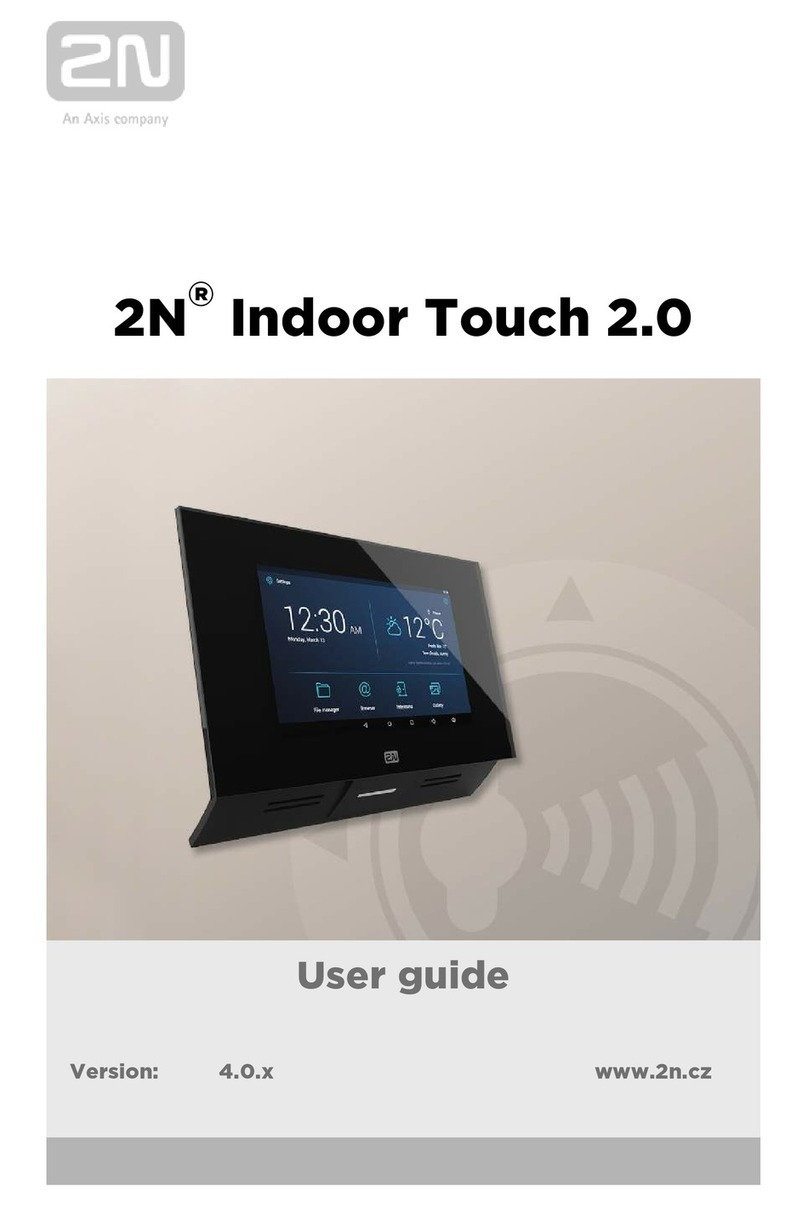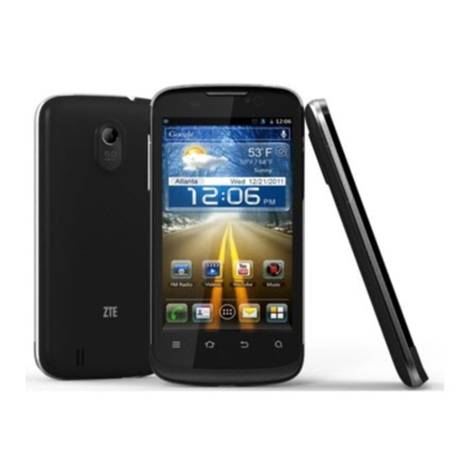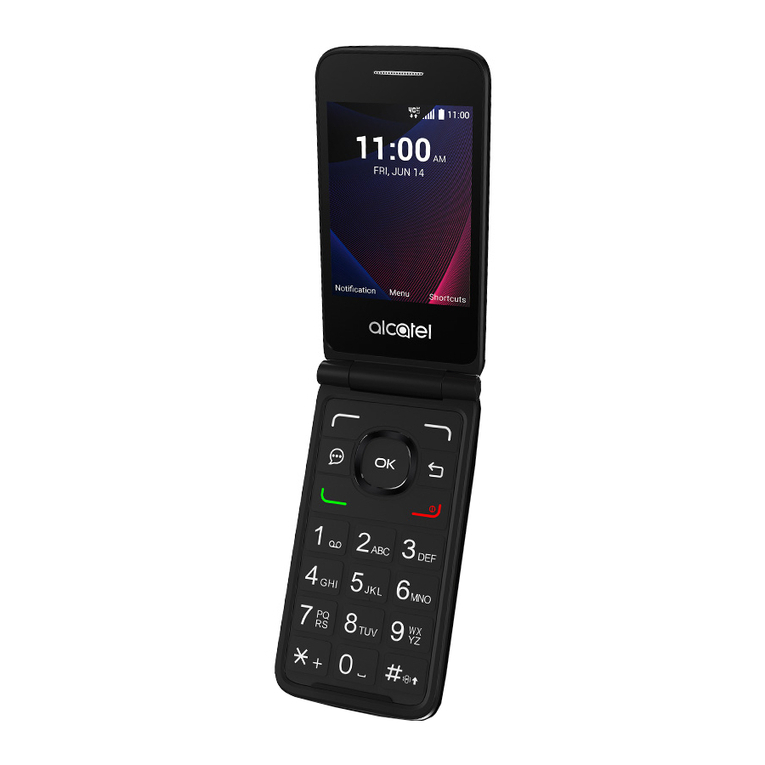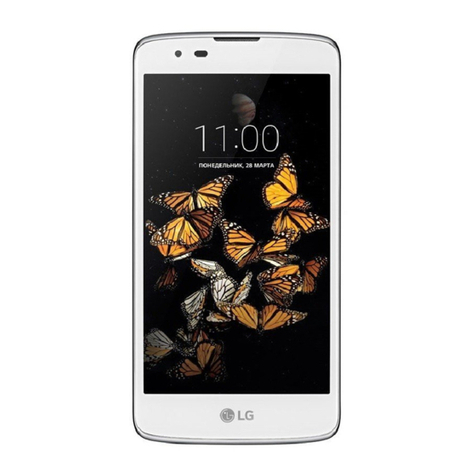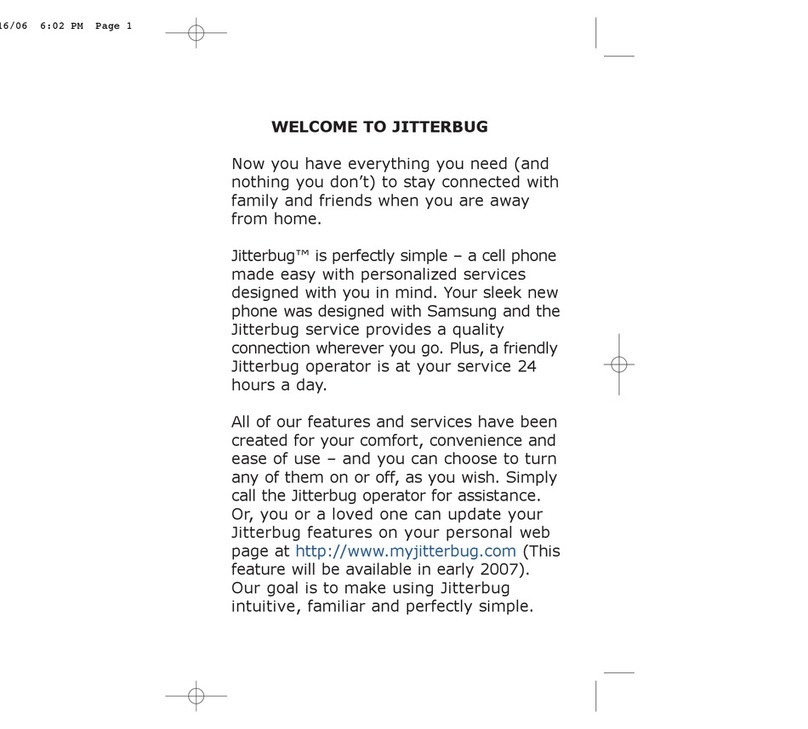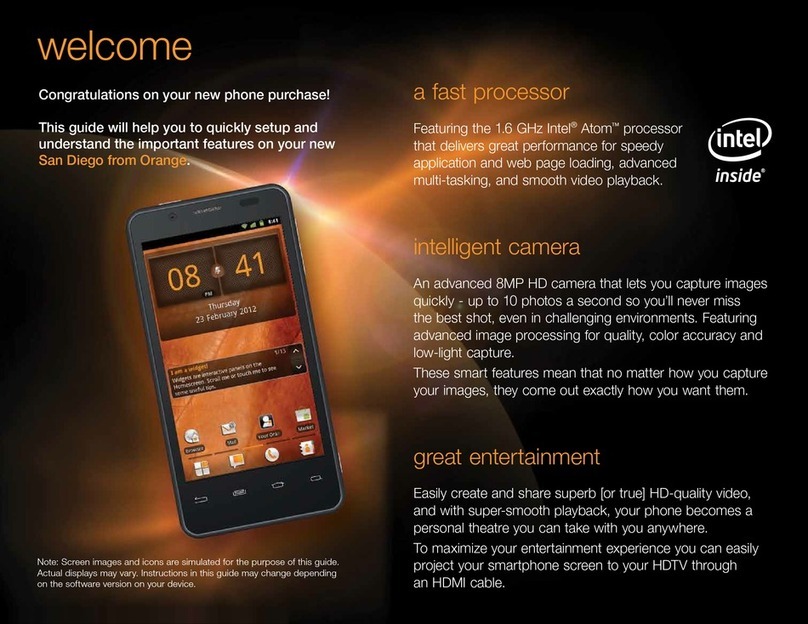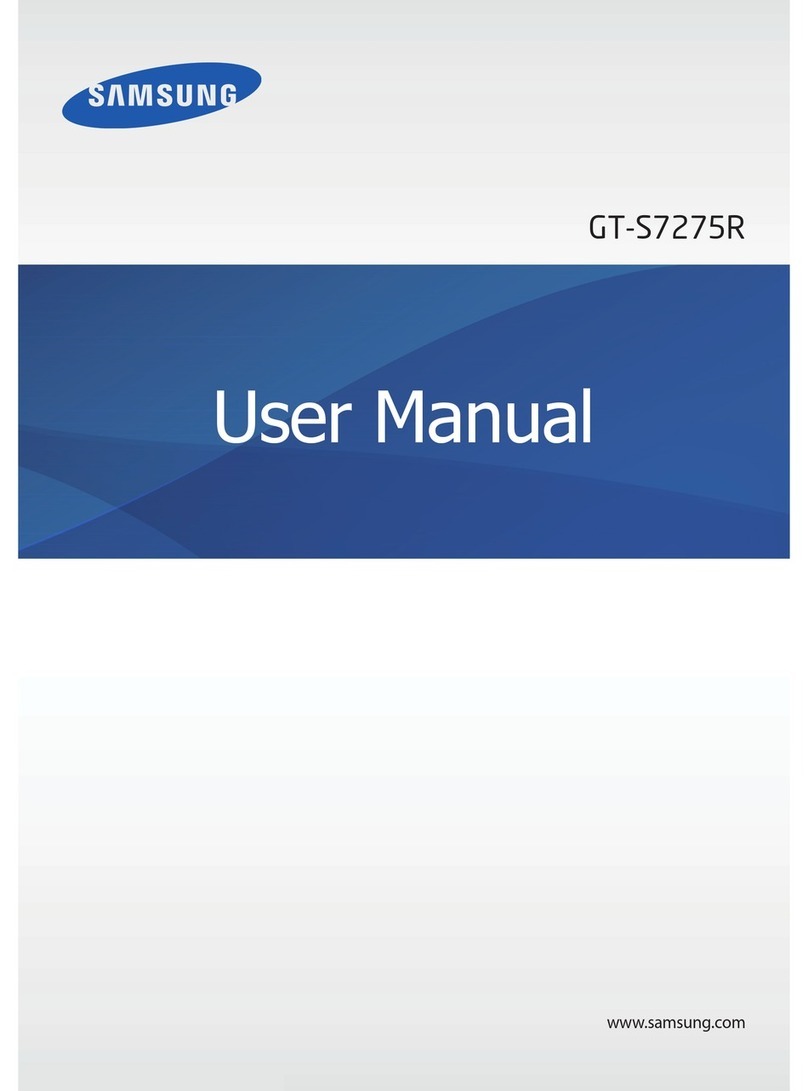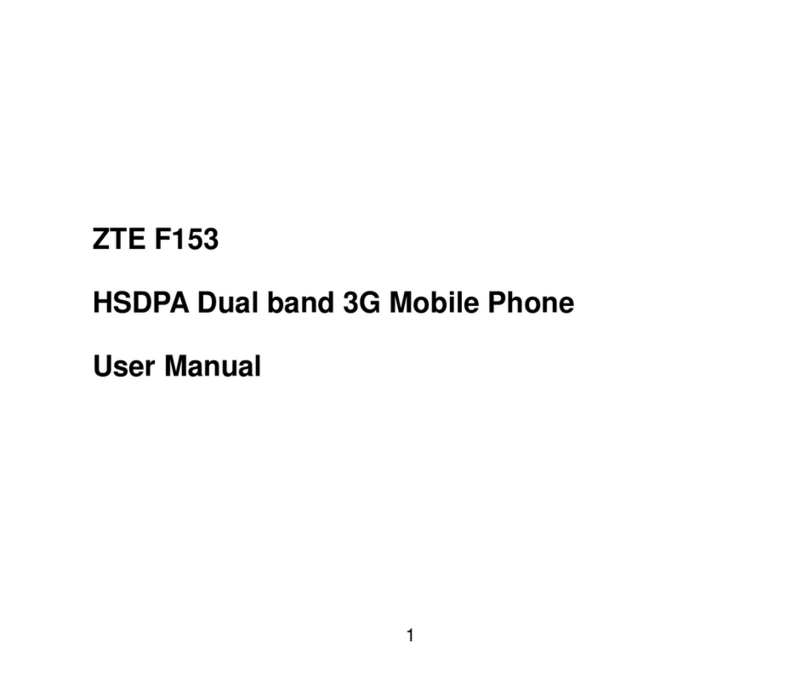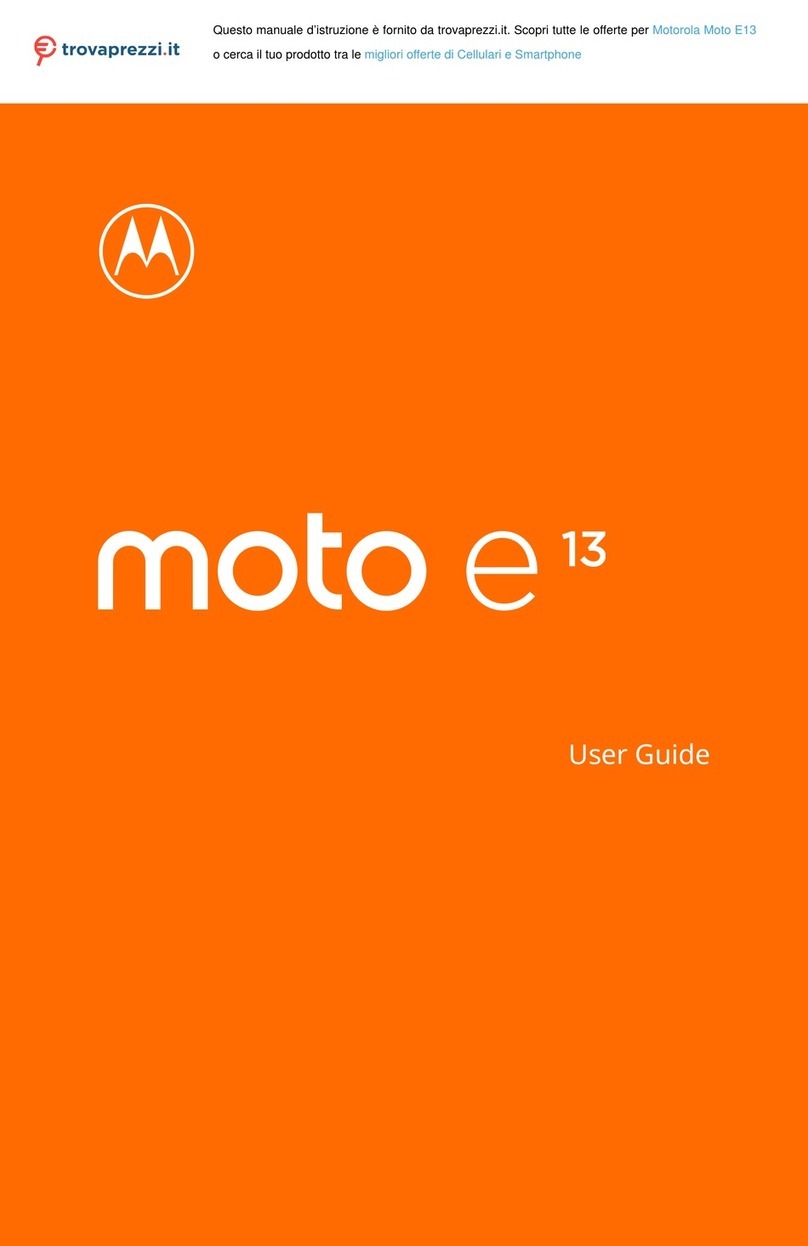DIRECT ALARM SUPPLIES DL150 User manual

DL150
DOWNLOADABLE CONTROL COMMUNICATOR
INSTALLATION MANUAL
TABLE OF CONTENTS
1. GENERAL DESCRIPTION ............................................................................................ 2
2. STANDARD AND OPTIONAL PARTS LIST ................................................................ 2
3. FEATURE DEFINITIONS .............................................................................................. 3
4. TERMINAL DRAWING AND SPECIAL NOTES ........................................................... 4
5. TERMINAL DESCRIPTION ........................................................................................... 5
6. FUSE DESCRIPTION .................................................................................................... 6
7. PROGRAMMING PROCEDURES & EXAMPLES ...................................................6 - 7
8. USERS 1-15 ARM / DISARM CODE ENABLING.......................................................... 8
9. COMMUNICATOR CODES...................................................................................13 - 17
10. TIMING OPTIONS ...............................................................................................17 - 18
11. AVAILABLE ZONE TYPES......................................................................................... 20
12. AVAILABLE ZONE CHARACTERISTICS...........................................................20 - 21
13. PROGRAMMING THE AUXILIARY OUTPUTS..................................................24 - 26
14. CALENDER / CLOCK PROGRAMMING ............................................................28 - 29
15. PROGRAMMING WORKSHEETS......................................................................30 - 35
16. APPENDIX 1& 2...................................................................................................36 - 37
17. SPECIFICATIONS & WARRANTY ........................................................................... 38
DIRECT ALARM SUPPLIES CONDELL PARK NSW
SERVICE / TECHNICAL (02) 97092811 OR 1 800 252213

2
General Description
The DL150 is a versatile 6 zone up/downloadable security control with a built-in digital communicator. Its microcomputer
design gives some of the most versatile, yet easy to use features available for most security applications today. Each of the
six zones can be programmed to be one of nine different types including 24-Hour, Handover, Fire, Keyswitch and Day Zone.
Each zone is individually annunciated and can be bypassed from the code pad. See page 20 for a description of all zone
types.
Read the USER’S MANUAL before you begin the installation for the best overall description of how the DL150 functions.
After installation of the security system, complete the information on page 1 of the users manual and explain the system
operation to all security system owners/operators.
Standard Parts List
The DL150 is shipped with the parts listed below.
QUANTITY PART DESCRIPTION PART NO.
1MASTER CONTROL PANEL W/O CODE PAD FS4692
10 3.3K, 1/2 WATT E.O.L. RESISTORS EOL-33
1TELEPHONE LEAD FS4596
1INSTALLATION MANUAL IM-DL150
1USER’S MANUAL OM-DL150
Optional Parts List
The following parts are available for use with the DL150.
OPTIONAL PARTS DESCRIPTION PART NO.
6 ZONE LED SMART CODE PAD FS4691
LCD ALPHA NUMERIC DISPLAY CODE PAD FS4534
AC POWER SUPPLY 16.5V 1.5 AMP PLUG PACK FS4402
PROGRAMMER WITH DIGITAL NUMERIC DISPLAY FS4597
SMART PROGRAMMER WITH LCD DISPLAY FS4610
12VDC 6AH BATTERY FS4312
DOWNLOADING SOFTWARE PACKAGE FS4532

3
FEATURE DEFINITIONS
Answering Machine Defeat
The DL150 has the ability to defeat an answering machine to receive a call for up/downloading.
Auto Arming
If programmed, the DL150 will automatically arm the system at a specific time, if it has not already been armed by a system
user.
Auto Isolate Enable
When enabled, the DL150 can be armed with zones violated, lacking a green "READY" light on the code pad. Under this
condition, all zones that are not secure at the end of the exit delay will become isolated. All zones that become secured
before the end of the exit delay will become active in the system.
Auxiliary Outputs
The DL150 has four auxiliary outputs that can be activated by 58 different conditions.
Chime Feature
If chime zones are selected, pressing the [1] from the code pad will enable this feature.
Competitor Lockout
Through downloading, local programming can be "locked out" on the DL150. This eliminates the ability to change
programming data at the local level.
Dynamic Battery Test
When enabled in location 239, the DL150 can be programmed to perform a Dynamic Battery Test for a selected duration,
at the preselected time.
Group Isolate
Zones can be programmed to isolate as a group when the [¬] button is pressed during the exit delay. This feature is enabled
in Locations 219-224: Assigning Special Characteristics For Zones beginning on page 20 of this manual.
Partial Arm
This unique home level arming allows you to remain inside your home and only arm areas that are not occupied. For
example, Night Arming.
Quick Arm
If programmed, the DL150 can be armed by entering a one button "Quick Arm" code which is [3].
Secondary Exit Delay
Used most often for garage doors, this zone type is a second entry/exit delay zone that has its own delay times, independent
of the standard entry/exit delay zone.
Smoke Detector Reset
If programmed the [#] key on the code pad can be used to reset smoke detectors.

4
TERMINAL DRAWING & SPECIAL NOTES

5
TERMINAL DESCRIPTION
TERMINAL NO. DESCRIPTION
AUX OUTPUTS
1
Programmable Auxiliary Output Terminal. Current limited to 250 mA positive and 200 mA
negative. This Auxiliary output is normally used to connect the negative lead of the strobe. The
positive lead of the strobe can be connected to any of the positive terminals.
2 - 4 This Auxiliary output is normally used to connect the negative lead of the siren or screamer.
The positive lead of the screamer can be connected to any of the positive terminals. Up to
two D.C. Sirens or Screamers can be connected to this terminal.
ZONES
1
Connect one side of zone 1 loop. Other side of loop to common terminal 6. Open or short
causes alarm.
COM Common (-) Terminal
2Connect one side of zone 2 loop. The other side of loop to common terminal 6. Open or short
causes alarm.
3 - 5 See Terminal Drawing and repeat the above sequence for zones 3-5.
6Zone 6 may be used as part of a two wire smoke detector loop. J8 must be set for two wire
smoke detector loop. For normal zone operation, J9 must be set. NOTE: Zone 6 is only
compatible with DAS approved two wire smoke detectors.
KEYPAD
CLOCK, DATA,
COM, POS
Connect code pad wires as follows; yellow to CLOCK, green to DATA, black to COM, red to
POS. 70 meters maximum run with 7/020 cable, 120 meters maximum run with 14/020
cable. Home run cable to each code pad.
SPK/BELL
NEG(-) &
POS(+)
Siren driver output to speaker(s), (speaker rating should be 15 watt at 8 or 16 ohm, or 30/40
watt at 4, 8, or 16 ohms). If siren driver disable is selected in location 235, output becomes
voltage output, 12VDC, 1 Amp maximum load. NOTE: A 3K3 resistor must be placed
across these terminals when a 12 VDC siren or screamer is used without a horn
speaker in parallel. If no resistor is used, you may experience voltage leakage into the
siren / screamer which will cause these devices to output a small signal.
SMOKE/PWR
NEG(-) &
POS(+)
Smoke detector power 12VDC, 100 mA maximum (For those jurisdictions which allow the
Priority zone to be used with smoke detectors.)
AUX PWR
NEG(-) &
POS(+)
Auxiliary power, regulated 12VDC, 500 mA maximum.
EARTH/GND Earth Ground, connect to a cold water pipe or 2 to 3 meters driven rod.
16.5 VAC AC input, connect a 16.5V 1.5 Amp Plug Pack.
Battery leads Standby battery leads black(-) and red(+) connect to a 12VDC lead acid rechargeable battery.
Do not connect to a dry cell battery.

6
FUSE DESCRIPTION
FUSE NO. DESCRIPTION
F1 1 AMP / Aux Power & Smoke
Detector Power
F2 2 AMP / Siren Driver
F4 1 AMP / Code pad
PROGRAMMING
The DL150 can be placed into the "Program" mode by use of the new FS4610 Smart Programmer, or the original FS4597
programmer, or for Code Pad programming by utilizing the FS4534 LCD Code Pad (the preferred method) or the FS4623
LED Code Pad. These methods are described below.
Using a Programmer
The FS4610 Smart Programmer has been designed to make programming of the DL150 simpler as well as more efficient
for users. The FS4610 programmer features up to 4 resident standard programs to allow for separate system
standardization. Plug the optional model FS4610 programmer into the 4-pin male outlet marked "program" on the DL150
P.C. Board.
Using The LCD Code Pad
The most straightforward method of Code Pad programming is to utilize the FS4534 LCD Code Pad in the programming
mode. To access the programming mode enter [C]-[0]-[0], followed by the four digit "Go To Program" access code which
is factory default [9]-[0]-[5]-[0] (this code can be reprogrammed), and follow the Code Pad prompts.
Using The LED Code Pad
The DL150 can also be programmed by the standard binary method of Code Pad programming described below. When
the FS4623 LED Code Pad is used for programming, enter the factory default four digit "Go To Program" access code of
[9] [7] [1] [3]. NOTE: The DL150 must be disarmed to gain access to programming with this code. After entry of this code,
the DL150 will be in the "Program" mode, and the yellow LED's will display the data in location 000. The data is displayed
using a Binary system. With this system the yellow zone 1 LED equals "1" when illuminated. The zone 2 LED equals "2"
when illuminated. The zone 3 LED equals "4" when illuminated. The zone 4 LED equals "8" when illuminated. Thus if the
data in location 000 is "9", the LED for zone 1 (=1) and zone 4 (=8) would be illuminated. By adding the two values together,
(1+8=9) you would determine that the data in location 000 is "9". If the data in location 000 is "6", the LEDs for zone 2 (=2)
and zone 3 (=4) would be added (2+4=6) indicating the data in that location to be "6". If no LED's are illuminated, the
location contains a "0". To advance from location 000 through 255, press the [#] key. To go to a specific location, press the
location number followed by the [#] key. The yellow LED's will then display the data in that location. Data is changed by
entering a number 0 to 15 followed by [¬] (¬= data enter). Review the examples on the following page.
Important Function Codes
[9]-[5]-[0]-[#] When in the program mode, this function code can be used to write original factory default codes into the
DL150.
[9]-[3]-[0]-[#] This function code is used to exit the programming mode after it was accessed via the Code Pad.
! ! ! IMPORTANT ! ! !
Before programming the DL150 for the first time, enter the "Go To Program Code" [9]-[7]-[1]-[3] from the Code Pad, followed
by the factory default function code [9]-[5]-[0]-[#]. The panel defaults will now match this installation manual and you may
begin programming the control panel. When using an optional plug-in programmer which automatically enters the
programming mode, the only entry necessary is [9]-[5]-[0]-[#] to load factory defaults.

7

8
LOCATIONS 000-003: PROGRAMMING THE MASTER ARM/DISARM CODE
Locations 000-003 contain the Master Arm/Disarm code (user number 1). Location 000 contains the first digit of the code;
location 003 contains the fourth digit of the code. THE CODE MUST CONTAIN FOUR (4) DIGITS. The master code can
then be used in the RUN mode to enter arm/disarm codes 1 - 15. The factory default code is [1]-[2]-[3]-[4].
LOCATIONS 004-055: PROGRAMMING THE ARM/DISARM CODE FOR USERS 2 THROUGH 14
Locations 004-055 contain the arm/disarm codes for users 2 through 14. To program these codes, follow the instructions
in the paragraph above. To disable these codes, program a "15" (factory default) as the first digit of the code. These codes
can be changed in the RUN mode using the master code (refer to user's manual).
LOCATIONS 056-059: PROGRAMMING THE ARM/DISARM CODE FOR USER 15 (DURESS CODE)
Locations 056-059 contain the arm/disarm code for user number 15 (Duress Code). To program this code, follow the
instructions in the paragraph above. This code can be used as a duress code if so programmed in locations 160-161.
Factory default for this code is "15", disabled.
LOCATION 060-063: GO TO PROGRAM CODE
Locations 060-063 contain the "Go To Program" access code. Location 060 contains the first digit of the code and location
063 contains the fourth digit of the code. THE CODE MUST CONTAIN FOUR (4) DIGITS. With the DL150 disarmed, the
"Go To Program" access code can be used to enter the program mode. To disable the "Go To Program" access code,
program a "15" in location 060. The factory default setting is [9]-[7]-[1]-[3]. NOTE: The first digit of this code should not
match the Quick-Arm digit. NOTE: If a "15" is programmed into location 60 to disable this code, programming can only be
accessed through the downloading software , a plug in programmer or using the program code on a LCD code pad.
LOCATIONS 064-079: PRIMARY PHONE NUMBER
Phone # 1 is programmed in successive locations beginning with location 064. Delays of four seconds can be programmed
at any point in the phone number by programming a "13" in the appropriate location. If tone dialling is desired, program a
"15" in the location where tone dialling should begin. If a "¬" or "#" are required in your phone number then a "11" = "¬"
and "12" = "#". If the entire number should be tone dialling, program a "15" in location 064. Factory default is "14" in each
location and the phone number is not enabled. A "14" indicates the end of the phone number. Example: If phone number
is to be 027244211, and must be touch tone dialling, then this phone number would be programmed as:
[15]-[¬]-[#]-[0]-[¬]-[#]-[2]-[¬]-[#]-[7]-[¬]-[#]-[2]-[¬]-[#]-[4]-[¬]-[#]-[4]-[¬]-[#]-[2]-[¬]-[#]-[1]-[¬]-[#]-[1]-[¬]-[#]-[14]-[¬]-[#].
The "15" selects touch tone dialling, and the "14" ends the phone number. Phone numbers can be programmed by the user
in the run mode when formats 3 (Pager) and 5 (Siren tone) are selected in location 084. Tone or pulse dialling must be
programmed at this point, where a “15" in the first location of the phone number will enable tone dialling, and any other value
will enable pulse dialling. Refer to the user manual for more detail.
LOCATIONS 080-083: PRIMARY ACCOUNT CODE
The account code is sent when any phone number is dialled and is programmed in locations 080-083. If the account code
is three digits long, use locations 080- 081- 082, and program a "0" in location 083. If a zero "0" is part of an account code,
it should be programmed as a "10". Program a "0" to indicate the end of the account code. Example: Account number
of 2090 would be entered as [2]-[¬]-[#]-[10]-[¬]-[#]-[9]-[¬]-[#]-[10]-[¬]-[#] (starting at location 080). Account code of 209
for low speed would be entered as [2]-[¬]-[#]-[10]-[¬]-[#]-[9]-[¬]-[#]-[0]-[¬]-[#] (starting at location 080).

9
LOCATION 084: COMMUNICATOR FORMAT
The Communicator Format is transmitted when any phone number is dialled. Select a format from below, and program
the appropriate number in this location.
DATA FORMAT DESCRIPTION
0LOCAL ONLY COMMUNICATOR IS DISABLED
1ADEMCO CONTACT ID DTMF FORMAT
2ADEMCO 4/2 EXPRESS DTMF FORMAT
3PAGER FORMAT REPORTS IN 4 + 2 FORMAT /OR DOMESTIC DIALLING -- PHONE NUMBERS
PROGRAMMABLE BY USER, REFER TO USER’S MANUAL FOR DETAILS.
4ADEMCO HIGH SPEED DTMF FORMAT
5SIREN TONE FORMAT SIREN LIKE SOUND, DOMESTIC DIALLING -- PHONE NUMBERS PROGRAMMABLE
BY USER, REFER TO USER’S MANUAL FOR DETAILS.
6CADDX MODEM PROPRIETARY
7VOICE MODULE /
RADIONICS EXTENDED
SLOW
1800Hz TRANSMITTAL 2300Hz HANDSHAKE 20 PPS HEX EXT DOUBLE ROUND.
PULSE DIALLING MUST BE USED WHEN A VOICE MODULE IS CONNECTED.
8RADIONICS EXTENDED
FAST
1800Hz TRANSMITTAL 2300Hz HANDSHAKE 40 PPS HEX EXT DOUBLE ROUND
9RADIONICS EXTENDED
FAST
1800Hz TRANSMITTAL 1400Hz HANDSHAKE 40 PPS HEX EXT DOUBLE ROUND
10 RADIONICS EXT FAST
W/PARITY
1800Hz TRANSMITTAL 2300Hz HANDSHAKE 40 PPS HEX EXTENDED
11 ADEMCO/SILENT KNIGHT
SLOW
1900Hz TRANSMITTAL 1400Hz HANDSHAKE 10 PPS DOUBLE ROUND PARITY
12 SILENT KNIGHT 4+2
FAST
1900Hz TRANSMITTAL 1400Hz HANDSHAKE 20 PPS DOUBLE ROUND PARITY
13 SESCOA/FRANKLIN
FAST
1800Hz TRANSMITTAL 2300Hz HANDSHAKE 20 PPS HEX DOUBLE ROUND
14 SIA FSK FORMAT
Location 84 contains the Communicator Format used to transmit to the receiver or pager connected to any of the phone
numbers. Consult the instructions for your central station receiver to determine which format is compatible. Select a format
from the 14 listed above. If this location contains a "0", the built-in communicator will be disabled, and the DL150 will
function as a local only control.
PAGER FORMAT (3): The Pager Format when selected will make all dial attempts programmed into location 128,(Dial
attempt counter) with no delay between attempts. The reporting format will consist of the primary account code (location
080-083) followed by the event code and point number. For example, if the account code was programmed as 1234, and
zone one alarm was reported, the transmission would look as follows: 1234 31 (1234) account code (3) event number
programable for 0 to 15, and (1) point number programable for 0 to 15. The event code and point number location are
programmed at each communicator code option. These options start at location 148 through to 196.
SIREN FORMAT (5): The Siren Format when selected will make all dial attempts programmed into location 128,(Dial
attempt counter) following the selection made in location 127 ( communicator dialling sequence controller). A siren-like tone
will be transmitted for 40 seconds for each dial attempt. When the called party answers the incoming call, they will hear a
siren tone for 4 seconds, followed by a 2-second pause. This will run for a period of 40 seconds per call. During any 2-
second pause period, the call recipient can press the star [¬] key on their touch tone phone for a period of 1 second. Note:
Not all touch tone phones can produce a continuous tone while their keys are depressed. If this is the case with the
selected phone, it will not be able to kissoff the siren tone format.

10
LOCATIONS 085-100: SECONDARY PHONE NUMBER
Phone # 2 is programmed in successive locations beginning with location 085. Delays of four seconds can be programmed
at any point in the phone number by programming a "13" in the appropriate location. If tone dialling is desired, program a
"15" in the location where tone dialling should begin. If a "¬" or "#" are required in your phone number then a "11" = "¬"
and "12" = "#". If the entire number should be tone dialling, program a "15" in location 085. Factory default is "14" in each
location and the phone number is not enabled. A "14" indicates the end of the phone number. Example: If phone number
is to be 027244211, and must be touch tone dialling, then this phone number would be programmed as:
[15]-[¬]-[#]-[0]-[¬]-[#]-[2]-[¬]-[#]-[7]-[¬]-[#]-[2]-[¬]-[#]-[4]-[¬]-[#]-[4]-[¬]-[#]-[2]-[¬]-[#]-[1]-[¬]-[#]-[1]-[¬]- [#]-[14]-[¬]-[#].
The "15" selects touch tone dialling, and the "14" ends the phone number. Phone numbers can be programmed by the user
in the run mode when formats 3 (Pager) and 5 (Siren tone) are selected in location 084. Tone or pulse dialling must be
programmed at this point, where a “15" in the first location of the phone number will enable tone dialling, and any other value
will enable pulse dialling. Refer to the user manual for more detail.
LOCATIONS 101-116: THIRD PHONE NUMBER
Phone # 3 is programmed in successive locations beginning with location 101. Delays of four seconds can be programmed
at any point in the phone number by programming a "13" in the appropriate location. If tone dialling is desired, program a
"15" in the location where tone dialling should begin. If a "¬" or "#" are required in your phone number then a "11" = "¬"
and "12" = "#". If the entire number should be tone dialling, program a "15" in location 101. Factory default is "14" in each
location and the phone number is not enabled. A "14" indicates the end of the phone number. Example: If phone number
is to be 027244211, and must be touch tone dialling, then this phone number would be programmed as:
[15]-[¬]-[#]-[0]-[¬]-[#]-[2]-[¬]-[#]-[7]-[¬]-[#]-[2]-[¬]-[#]-[4]-[¬]-[#]-[4]-[¬]-[#]-[2]-[¬]-[#]-[1]-[¬]-[#]-[1]-[¬]-[#]-[14]-[¬]-[#].
The "15" selects touch tone dialling, and the "14" ends the phone number. Phone numbers can be programmed by the user
in the run mode when formats 3 (Pager) and 5 (Siren tone) are selected in location 084. Tone or pulse dialling must be
programmed at this point, where a “15" in the first location of the phone number will enable tone dialling, and any other value
will enable pulse dialling. Refer to the user manual for more detail.
LOCATION 117-126: RESERVED
LOCATIONS 127: COMMUNICATOR DIALLING SEQUENCE CONTROLLER
The number programmed into this location determines the sequence and method the communicator will utilize when
attempting to communicate a given event. Use the table below to build the appropriate number. Add the number(s)
associated with the desired features and program the sum in this location. The default for this location is "7". Note. When
Pager (3) format is selected in location 084, it will override the options programmed in this location. Refer to location 084
for more detail.
DATA DESCRIPTION
"1" Alternates between phone number #1, phone number #2 and phone number #3 in increments
of one (1) call to each, until the selected number of dial attempts has been made to each number.
Each dial attempt is equal to the sum of phone numbers programmed. For example, if two (2)
dial attempts are programmed in location 128, and phone numbers 1, 2, and 3 are programmed,
there would be a total of 6 dial attempts made, two (2) attempts to each number.
"2" The communicator attempts each phone number once and then goes into Antijam for 90 seconds
before it continues with its next attempt.
"4" The communicator completes the number of dial attempts programmed in the number of dial
attempts location (128). If unsuccessful, it will delay 5 minutes and attempt the same number of
dial attempts once again. If the communicator is still unsuccessful, a "Fail to Communicate" code
will be reported with the next successful communication. If this option is not selected, the
communicator will only attempt to communicate for the number of attempts programmed into
location (128). If these attempts are completed unsuccessfully, the communicator will report a
"Fail To Communicate" code at the next successful communication.

11
LOCATION 128: DIAL ATTEMPTS
Location 128 contains the number of dial attempts (1 to 15 attempts) the communicator will try for each phone number
programmed before ending the notification process. Each dial attempt is equal to the sum of phone numbers
programmed. Factory default is "6". The communicator will make 1 attempt to the first number, 1 attempt to the second
number (if programmed), and 1 attempt to the third phone number (if programmed), until a total of "6" attempts is made
to each phone number programmed. A 90 second Antijam is performed at the end of each group of dial attempts, and if
all attempts are unsuccessful, a 5-minute delay will occur before the number of dial attempts are retried. Note: The value
in the phone sequence controller (location 127) may alter this sequence.
LOCATION 129: NUMBER OF RINGS TO ANSWER A DOWNLOAD CALL
Location 129 contains the number of rings a DL150 must detect before answering the telephone when initiating a download
session. If a number from "1" to "15" is entered in this location, the DL150 will answer after the number of rings entered
in this location has been detected. If a "0" is programmed into this location the DL150 will not answer the call and Rings To
Answer is disabled. Note: If a value is programmed into location 130 (Number of calls to answer download call) the call
count must have also been reached before the DL150 can initiate a download session. Default for this location is "0"
disabled.
LOCATION 130: NUMBER OF CALLS TO ANSWER A DOWNLOAD CALL
Location 130 contains the number of calls the DL150 must detect before accepting the Number of Rings programmed in
location 129). A call is satisfied by the DL150 detecting one (1) or more rings per call and then a 8 second period with no
ring. The next call must then be made within a 45-second window. Example: If three (3) calls are programmed in location
130, the DL150 must receive 3 calls which exceed 1 ring with a delay of no less than 8 seconds between each call and no
more than 45 seconds between each call. On the fourth call, the Number of Rings programmed in location 129 must be
reached before the DL150 can initiate a download session. This feature can not be selected if Answering Machine Defeat
in location 131) is enabled.
LOCATION 131: ANSWERING MACHINE DEFEAT
Location 131 contains the number of rings (maximum 3) or less the control must see before it starts a 45-second defeat
timer. To defeat an answering machine or fax, two (2) telephone calls must be made to the premises. On the first call, let
the phone ring the same number of times (or less) as the number programmed in this location (maximum 3). The control
panel will detect these rings and start a 45 second timer. If a call comes in during that 45 second time frame the control
panel will answer on the first ring. There must be at least 8 seconds delay between the first and second call to allow the
DL150 to determine that there are no more rings coming from the first call. To disable this feature program a "0" into this
location. Options for this location are "1" "2" or "3". (Default "0" disabled.) Note: This feature must not be used when the
control is connected to a phone line that may experience call traffic, such as described above, which may cause the control
to answer normal incoming calls. If this feature is enabled, Number Of Calls To Answer A Download Call in location 130
will be disabled.
LOCATION 132: ALL ABORT ENABLE
Programming a "1" in location 132 will cause the communicator to abort its report at the end of an attempt in progress, or
instantly if an attempt has not begun, if a valid code is entered. All 24-hour zones and codepad-activated events will also
abort. This feature only operates when Pager (3) and Siren Tone (5) Formats are selected in location 084. Default for this
location is "0", all abort disabled.
LOCATION 133: DELAY BEFORE DIAL TIME
Location 133 contains the number of 2-second increments in the Delay Before Dial Time. The Delay Before Dial Time can
be programmed in 2-second increments from 2 to 30 seconds (1 =2 seconds through "15" = 30 seconds). For example,
programming a "4" in this location will produce a Delay Before Dial Time of eight seconds. If a valid code is entered within
the delay time programmed, the dialler will abort any communicator report which may be generated. 24 hour zones and
duress alarms will have no delay time. The default Delay Before Dial Time is "0", no delay time before dialling.

12
LOCATION 134: COMMUNICATOR ZONE ALARM REPORT CONTROLLER
If a "1" is programmed in location 134, the communicator will only report once per zone during each arming cycle. The zone
alarm restore code (if programmed in location 193) will be reported at the Opening (Disarm) time. Factory default is "0",
and this feature is not enabled. It will report zone alarms and restores (if programmed) as they physically occur. If a value
from 2 through to 15 is entered, then this value would represent the additional number of zone alarm reports each zone can
share before that zone is locked out. A zone trip will not be subtracted from the number count until the zone has tripped
more than once. Once a zone is locked out, the final zone alarm restore code (if programmed in location 193) will be
reported at the Opening (Disarm) time.
VALUE DESCRIPTION
0UNLIMITED COMMUNICATOR
1LIMITED COMMUNICATOR TO ONCE PER ZONE
2-15 THE NUMBER OF DIAL ATTEMPTS THE DL150 CAN MAKE AFTER A ZONE HAS MADE ITS OWN DIAL ATTEMPT
LOCATIONS 135: CALLBACK TELEPHONE NUMBER CONTROL
The number programmed in location 135 controls the use of the Callback Telephone Number. This number is programmed
in locations 008 - 023 of the download section and must be programmed for location 135 to have an effect. The Callback
Telephone Number will be used according to the following binary scale.
VALUE DESCRIPTION
1THE DL150 WILL NOT USE THE CALLBACK NUMBER FOR A DOWNLOAD SESSION.
2THE [¬¬]-[9]-[8]-[#] SITE INITIATED DOWNLOAD IS ENABLED.
4CALLBACK AT AUTOTEST INTERVALS ENABLED AND PERFORMS AUTOMATIC FUNCTION SELECTED IN
THE DASLOAD DOWNLOAD SOFTWARE.
LOCATION 136: RING DETECT ADJUST
Programming a "6" thru "12" in location 136 may assist, if difficulties are experienced with the DL150 answering an incoming
call. This will make the ring detect window wider so that a greater number of exchange types and ring frequencies can be
catered for. Note: "6" is most sensitive and "12" is least sensitive. Caution must be taken when programming this location
the DL150 does not become too sensitive to incoming calls.
LOCATION 137: TELEPHONE LINE MONITOR
Locat ion 137 is used t o program t he Telephone Line Monit or. Select a number f rom t he t able below which corresponds
t o t he act ivat ion required for your inst allat ion. Fact ory def ault is "0" and t his f eat ure is not enabled. NOTE: When using
a phone line monit or, it is suggest ed t hat a delay be programmed int o locat ion 138 t o delay alarm act ivat ion upon phone
line fault . This could eliminat e t he possibilit y of a f alse alarm being creat ed due t o phone line maint enance perf ormed
by t he t elephone company, which is oft en perf ormed during lat e night or early morning hours.
VALUE DESCRIPTION
"0" DISABLED
"1" ENABLED - SILENT MODE
"3" ENABLED - ACTIVATE SIREN ONLY
"5" ENABLED - ACTIVATE KEYPAD SOUNDER ONLY
"7" ENABLED - ACTIVATE SIREN & KEYPAD SOUNDER
"9" ENABLED - SILENT MODE (ARMED ONLY)
"11" ENABLED - ACTIVATE SIREN ONLY (ARMED ONLY)
"13" ENABLED - ACTIVATE KEYPAD SOUNDER ONLY (ARMED ONLY)
"15" ENABLED - ACTIVATE SIREN & KEYPAD SOUNDER (ARMED ONLY)

13
LOCATION 138: TELEPHONE LINE MONITOR DELAY
Location 138 contains the number of 10-second increments in the Telephone Line Monitor Delay before phone line fault
is activated. The Telephone Line Monitor Delay is used to overcome unnecessary telephone line faults caused by the
momentary removal of the DL150 phone line socket. THE MINIMUM DELAY TIME IS 20 SECONDS, THE BUILT-IN 20-
SECOND DELAY TIME MUST BE ADDED TO THE VALUE SELECTED IN THIS LOCATION. The Telephone Line Monitor
Delay can be programmed in 10 second increments from 0 to 150 seconds ("0" = 0 seconds through "15" = 150 seconds).
For example, programming a "2" in this location will produce a Telephone Line Monitor Delay of 40 seconds. Programming
a "6" in this location will produce a Telephone Line Monitor Delay of 80 seconds. The phone line fault condition will not
restore until the phone line is restored for the same period of time as programmed in this location. Factory default is "1" for
30 seconds delay.
LOCATION 139: FAILED DIAL ATTEMPT COUNTER
The number programmed in location 139 (1 to 15) will represent the number of failed dial attempts made by the DL150
before the action programmed in location 137 is activated. Factory default is "0" and this feature is not enabled. This feature
can be used with a normally silent alarm activation that may require an audible action after a number of failed dial attempts.
LOCATION 140-147: RESERVED
LOCATION 148-149: PROGRAMMING THE COMMUNICATOR CODE FOR ZONE 1
Locations 148-149 contain the Communicator Code to be reported each time zone 1 creates an alarm. Location 148
contains the event code, and location 149 contains the point number. When using Ademco High Speed, program a one
(1) in the second location to enable this report; a "1555 5555 7" is reported. When Contact ID is selected, program the event
code with the required event code from appendix 1 to enable this report event. Programming a three (3) in the event code
will select an event "130 - Burglary" to be reported. The data in the point number must be left at default or changed to
whatever zone number that is to be reported.
LOCATION 150-151: PROGRAMMING THE COMMUNICATOR CODE FOR ZONE 2
Locations 150-151 contain the Communicator Code to be reported each time zone 2 creates an alarm. Location 150
contains the event code, and location 151 contains the point number. When using Ademco High Speed, program a two (2)
in the second location to enable this report; a "5155 5555 7" is reported. When Contact ID is selected, program the event
code with the required event code from appendix 1 to enable this report event. Programming a three (3) in the event code
will select an event "130 - Burglary" to be reported. The data in the point number must be left at default or changed to
whatever zone number that is to be reported.
LOCATION 152-153: PROGRAMMING THE COMMUNICATOR CODE FOR ZONE 3
Locations 152-153 contain the Communicator Code to be reported each time zone 3 creates an alarm. Location 152
contains the event code, and location 153 contains the point number. When using Ademco High Speed, program a three
(3) in the second location to enable this report; a "5515 5555 7" is reported. When Contact ID is selected, program the event
code with the required event code from appendix 1 to enable this report event. Programming a three (3) in the event code
will select an event "130 - Burglary" to be reported. The data in the point number must be left at default or changed to
whatever zone number that is to be reported.
LOCATION 154-155: PROGRAMMING THE COMMUNICATOR CODE FOR ZONE 4
Locations 154-155 contain the Communicator Code to be reported each time zone 4 creates an alarm. Location 154
contains the event code, and location 155 contains the point number. When using Ademco High Speed, program a four (4)
in the second location to enable this report, a "5551 5555 7" is reported. When Contact ID is selected, program the event
code with the required event code from appendix 1 to enable this report event. Programming a three (3) in the event code
will select an event "130 - Burglary" to be reported. The data in the point number must be left at default or changed to
whatever zone number that is to be reported.
LOCATION 156-157: PROGRAMMING THE COMMUNICATOR CODE FOR ZONE 5
Locations 156-157 contain the Communicator Code to be reported each time zone 5 creates an alarm. Location 156
contains the event code, and location 157 contains the point number. When using Ademco High Speed, program a five (5)
in the second location to enable this report; a "5555 1555 7" is reported. When Contact ID is selected, program the event
code with the required event code from appendix 1 to enable this report event. Programming a three (3) in the event code
will select an event "130 - Burglary" to be reported. The data in the point number location must be left at default or changed
to whatever zone number that is to be reported.

14
LOCATION 158-159: PROGRAMMING THE COMMUNICATOR CODE FOR ZONE 6
Locations 158-159 contain the Communicator Code to be reported each time zone 6 creates an alarm. Location 158
contains the event code, and location 159 contains the point number. When using Ademco High Speed, program a six (6)
in the second location to enable this report; a "5555 5155 7" is reported. When Contact ID is selected, program the event
code with the required event code from appendix 1 to enable this report event. Programming a three (3) in the event code,
will select an event "130 - Burglary" to be reported. The data in the point number must be left at default or changed to
whatever zone number that is to be reported.
LOCATION 160-161: PROGRAMMING THE DL150 FOR DURESS CODE CAPABILITY
The DL150 has the ability to report a Duress Code when the system is armed or disarmed with user code number 15 and
a duress communicator code is programmed in locations 160-161. Location 160 contains the event code, and location 161
contains the point number. When using Ademco High Speed, program a one (1) in the second location to report a "1555
5555 1" - Duress. When Contact ID is selected, program a one (1) in the event code to report an event "121 - Duress". The
Open/Close report will accompany the Duress report complete with the user number to indicate that an Open or Close was
performed under Duress. No restore code is reported for this event. If both locations are "0", the Duress Code Capability
is disabled and user code number 15 can only be used as a standard arm/disarm code.
LOCATION 162-163: PROGRAMMING FOR AUXILIARY 1, [1] & [3] DOUBLE KEYPRESS
The DL150 has the ability to report an Auxiliary 1 code and activate the Priority siren each time the [1] and [3] keys are
pressed simultaneously on the code pad. The desired reporting code is programmed in locations 162-163. Location 162
contains the event code, and location 163 contains the point number. When using Ademco High Speed, program a one (1)
in the second location to report a "1555 5555 1" - Duress. When Contact ID is selected, program a one (1) in the event code
to report an event "110 - Fire". If activated, the siren can be silenced by entering any arm/disarm code. No restore code is
reported for this event. If both locations are "0", the Auxiliary 1 Double Keypress is disabled.
LOCATION 164-165: PROGRAMMING FOR AUXILIARY 2, [4] & [6] DOUBLE KEYPRESS
The DL150 has the ability to report an Auxiliary 2 code and activate the pulsing buzzer each time the [4] and [6] keys are
pressed simultaneously on the code pad. The desired Auxiliary 2 code is programmed in locations 164 - 165. Location 164
contains the event code, and location 165 contains the point number. When using Ademco High Speed, program a one (1)
in the second location to report a "1555 5555 1" - Duress. When Contact ID is selected, program a one (1) in the event
code to report an event "100 - Medical". If activated, the code pad sounder can be silenced by entering any Arm/Disarm
code. No restore code is reported for this event. If both locations are "0", Auxiliary 2 Double Keypress is disabled.
LOCATION 166-167: PROGRAMMING FOR AUXILIARY 3, [7] & [9] DOUBLE KEYPRESS
The DL150 has the ability to report an Auxiliary 3 code each time the [4] and [6] keys are pressed simultaneously on the
code pad. The desired Auxiliary 3 code is programmed in locations 166-167. Location 166 contains the event code, and
location 167 contains the point number. When using Ademco High Speed, program a one (1) in the second location to
report a "1555 5555 1" - Duress. When Contact ID is selected, program the event code with the required event code from
appendix 1 to enable this report event. Programming a "15" in location 166 will report an event "602 - Manual Autotest".
No restore code is reported for this event. If both locations are "0", Auxiliary 3 Double Keypress is disabled.
LOCATION 168-169: PROGRAMMING FOR CODE PAD PANIC, [¬¬] & [#] DOUBLE KEYPRESS
The DL150 has the ability to report a Code Pad Panic code and activate the Burg siren each time the [¬] and [#] keys are
pressed simultaneously on the code pad. The desired Code Pad Panic code is programmed in locations 168-169. Location
168 contains the event code, and location 169 contains the point number. When using Ademco High Speed, program a one
(1) in the second location to report a "1555 5555 1" - Duress. When Contact ID is selected, program a one (1) in the event
code to report an event "120 - Code Pad Panic". If activated, the siren can be silenced by entering any Arm/Disarm code.
No restore code is reported for this event. If both locations are "0", the Code Pad Panic Double Keypress is disabled.

15
LOCATION 170-171: PROGRAMMING THE CODE PAD TAMPER FEATURE
The DL150 has an optional Code Pad Tamper feature that, when enabled, will lock out the code pads for 1 minute if 30
random keypresses are made without producing a valid code. The desired tamper code should be programmed in locations
170-171. If the control is not programmed for local only, the tamper will be communicated. Location 170 contains the event
code, and location 171 contains the point number. When using Ademco High Speed, program a one (1) in the second
location to report a "5555 5551 7" - Zone 8 Alarm. When Contact ID is selected, program a one (1) in the event code to
report an event "137 - Code Pad Tamper". No restore code is reported for this event. If both locations are "0", the tamper
feature will not be enabled or reported.
LOCATION 172-173: PROGRAMMING TO REPORT DOWNLOADING COMPLETE
Locations 172-173 contain the communicator report sent each time a download session has been completed. The report
will come in after a disconnect has been made from a downloading session. Location 172 contains the event code, and
location 173 contains the point number. When using Ademco High Speed, program a one (1) in the second location to
report a "5515 5555 6". When Contact ID is selected, program a one (1) in the event code to report an event "412 -
Download Complete". If locations 172-173 are "0", this report is disabled.
LOCATION 174-175: PROGRAMMING FOR AUTOTEST REPORTS
The DL150 has the ability to send autotest reports hourly or once a week. Locations 174-175 contain the communicator
codes sent for autotest. Location 174 contains the event code, and location 175 contains the point number. When using
Ademco High Speed, program a one (1) in the second location to report a "5555 5555 9". When Contact ID is selected,
program a one (1) in the event code to report an event "602 - Autotest". If locations 174-175 are "0", Autotest is disabled.
(See also location 272-281).
LOCATIONS 176-177: FAIL TO COMMUNICATE COMMUNICATOR CODES
The DL150 has the ability to report a Fail To Communicate code to the base station if a report fails to get through to the base
in its pre-determined number of dial attempts. After a report has failed to communicate to the base station the DL150 will
store a Fail To Communicate code. When the very next report is communicated to the base the Fail To Communicate will
be reported. When using Ademco High Speed, program a one (1) in the second location to report a "5555 5555 9" - Auto
Test. When Contact ID is selected, program a "1" in the event code to report event "354 - Fail to Communicate". No restore
code is reported for this event. If a "0" is programmed, Fail to Communicate is disabled.
LOCATIONS 178-179: BOX TAMPER COMMUNICATOR CODES
The DL150 has the ability to report a Box Tamper if the tamper input changes from a normally closed state to open circuit.
The desired communicator code must be programmed into these locations. When Contact ID is selected, program a "1"
in the event code to report event "137 - Box Tamper". When using Ademco High Speed, program a one (1) in the second
location to report a "5555 5555 9" - Box Tamper. By enabling the Box Tamper event code it will change the remote arming
pins on the DL150 PCB to a box tamper input. The remote arm pins are located at the center of the DL150 PCB. When
box tamper is enabled in this location, the remote arming pins will become a normally closed circuit and must be open circuit
for activation. If a "0:0" is programmed, Box Tamper is disabled. Refer to location 209 (Tamper Sounder Controller) to
enable the Box Tamper feature.
LOCATIONS 180-181: SIREN FAULT
The DL150 has the ability to report a Siren Fault if the wires to the siren are cut or the siren fuse blows. Locations 180-181
contain the communicator codes sent for Siren Fault. Location 180 contains the extended communicator code and location
181 contain the standard communicator code. When using Ademco High Speed, program a one (1) in the second location
to enable this report; a "5555 5555 9" is reported. When Contact ID is selected, program a one (1) in the event code to
report an event "321 - Siren Trouble". If locations 180-181 are "0", Siren Fault is disabled.
LOCATIONS 182-183: AUXILIARY FUSE
The DL150 has the ability to send Auxiliary Fuse reports if the keypad or auxiliary power fuse is blown. Locations 182-183
contain the communicator codes sent for system trouble. Location 182 contains the event code and location 183 contain
the point number. When using Ademco High Speed, program a one (1) in the second location to enable this report, a "5555
5555 9"is reported. When Contact ID is selected, program a one (1) in the event code to report an event 300 - "System
Trouble". If locations 182-183 are "0", Auxiliary Fuse is disabled. Fuse 2 (siren fuse) will not report a fuse fail report.

16
LOCATIONS 184-185: AC POWER FAIL COMMUNICATOR CODES
The DL150 has the ability to report an AC Power Loss code to the base station after the power has been off for a selected
number of minutes from 0 to 15 (see location 241). The desired communicator code must be programmed into these
locations. When Contact ID is selected, program a "1" in the event code to report event "301 - AC Power Fail". When using
Ademco High Speed, program a one (1) in the second location to report a "1555 5555 6" - AC Power Fail. If "0" is
programmed, AC Power Fail is disabled.
LOCATIONS 186-187: LOW BATTERY COMMUNICATOR CODES
The DL150 has the ability to report a Low Battery code to the base station when AC power has been lost and the battery
has discharged down to 10.3 Volts. Low battery will also report if the Dynamic Battery Test fails. The desired communicator
code must be programmed into these locations. When Contact ID is selected, program a "1" in the event code to report
event "302 -Low Battery" or "309- Fail Dynamic Battery Test”. When using Ademco High Speed, program a one (1) in the
second location to report a "5155 5555 6" - Low Battery and Fail Dynamic Battery Test. If a "0" is programmed, Low Battery
is disabled.
LOCATION 188: AC POWER RESTORE COMMUNICATOR CODE
The DL150 has the ability to report to the base station when the AC power has been restored. Once the AC power has been
restored to the DL150, there will be a delay time before the restore code will be sent to the base station. The time
programmed into location 188 for AC Loss Delay will also be the restore delay. Program a "1" into this location to enable
AC Power Loss Restore reports. Program a "0" into this location to disable restore reports. Default for AC Power Restore
code is "1" enabled.
LOCATION 189: LOW BATTERY RESTORE COMMUNICATOR CODE
The DL150 has the ability to send a restore code to the base station when the battery voltage is restored to normal operating
level (above 10.3 volts). Program a "1" into this location to enable Low Battery Restore codes. Program a "0"into this
location to disable Low Battery Restore codes. Default for Low Battery Restore code is ""1" enabled.
LOCATION 190: PROGRAMMING FOR PRIORITY ZONE FIRE REPORTING
The DL150 has the ability to report a trouble code each time a Fire zone opens. The desired trouble code is programmed
in location 190. When using Ademco High Speed, program a one (1) in this location to enable this report. A one (1) will be
displayed for the channel corresponding to the zone in Trouble alarm, i.e "5155 5555 5" will be reported for zone two (2).
When Contact ID is selected, program a one (1) in this location to report an event "380 - Zone Trouble". If this location
contains a "0", the Fire Trouble will not be reported.
LOCATION 191: ZONE TAMPER CODE
Location 191 is used to program reporting of the Zone Tamper code for zones (1 thru 6) when Contact ID and Ademco
High Speed is selected. The Zone Tamper communicator code can be reported when a Double End Of Line Zone is in an
Open/Closed circuit condition. When Contact ID is selected, program a one (1) in this location to report an event "137 -
General Tamper". When using Ademco High Speed, program a one (1) in this location to enable this report. A one (1) will
be displayed for the channel corresponding to the zone that is in Tamper, i.e. "5155 5555 5" will be reported for zone two
(2). Default for Zone Tamper code is "0" disabled.
LOCATION 192: PROGRAMMING FOR ISOLATE REPORTING
The DL150 has the ability to report an Isolate on zones 1-6. The desired Isolate code is programmed in location 192. When
using Ademco High Speed, program a one (1) in this location to enable this report. A one (1) will be displayed for the
channel corresponding to the zone that is Isolated, i.e. "5155 5555 3" will be reported for zone two (2). When Contact ID
is selected, program a one (1) in this location to report an event "570 - Zone Isolate". If this location contains a "0", Zone
Isolate will not be reported.
LOCATION 193: PROGRAMMING THE COMMUNICATOR CODE FOR ZONE RESTORE
Location 193 contains the communicator code that will be sent for restore of a zones and or system report events (not
including A.C. or Battery restores). When using Ademco High Speed, program a one (1) in this location to enable this report.
When Contact ID is selected, program a one (1) in this location to enable this report. If this location contains a "0", no zone
restores will be reported.

17
LOCATION 194: PROGRAMMING TO REPORT CLOSING
The DL150 has the ability to report a Closing code each time the control is armed. Program a "1" in this location to enable
this report. When using a one button "Quick Arm" code, user number 14 is reported. When reporting "Auto Arm", user
number 13 is reported. When using keyswitch zone or remote arming pins, user number 12 is reported. The closing report
will not be initiated until the end of the exit delay. When Ademco high speed is selected, a "U444 4444 4" event is reported.
When Contact ID is selected, an event "401 - Open/Close" is reported. If this location contains a "0", Closing will not be
reported.
LOCATION 195: PROGRAMMING TO REPORT OPENINGS
The DL150 has the ability to report an Opening code each time the control is disarmed. Program a "1" in this location to
enable this report. When using the remote arming input or keyswitch zone, user number 12 is reported. When Ademco high
speed is selected, a "U222 2222 2" event is reported. When Contact ID is selected, an event "401 - Open/Close" is reported.
If this location contains "0", Openings will not be reported.
LOCATION 196: PROGRAMMING THE COMMUNICATOR CODE FOR CANCEL (EXCEPTION OPENING)
Location 196 contains the communicator code that will be sent for Cancel. The Cancel code programmed in this location
will be sent if an arm/disarm code is entered after a trip on zones 1 through 6 has been reported (excluding 24-hour zones).
When using Ademco High Speed, program a one (1) in this location to enable this report. The opening event will be
reported with the user code number used. When Contact ID is selected, program a one (1) in this location to report event
"406 - Open". The opening event will be reported with the user code number used. This feature cannot be enabled when
Open/Close reporting is also enabled. If this location contains a "0", Cancel is disabled. NOTE: When Cancel communicator
reports a cancel code, all stored Restore codes will be cleared and not reported.
LOCATION 197-198: RESERVED
LOCATION 199: TWIN TRIP ZONE SOUNDER CONTROL
Location 199 controls the audible characteristic of the DL150 for the Twin Trip activation. Refer to location 225-230 for
further details on a twin trip zone type. Twin Trip zones are also individually enabled in locations 183-190. The audible
characteristic programmed will be activated when the first trip occurs on a Twin Trip zone. If a second trip occurs within the
period programmed in location 200, or a continuous trip for more than 10 seconds occurs, the normal audible characteristic
programmed for that zone type will override any options programmed in this location. Twin Trip zones can not be
programmed for entry/exit zones. The audible characteristic will sound for the duration of the Siren Cutoff time programmed
in location 206. Factory default is "0" (silent characteristics).
VALUE SOUNDER CONTROL
0SILENT
1SIREN
2CODE PAD SOUNDER
3CODE PAD SOUNDER & SIREN
LOCATION 200: TWIN TRIP TIME PERIOD
Location 200 contains the number of 1-minute increments in the Twin Trip Zone Time Period. The Twin Trip Zone Time
Period can be programmed in 1-minute increments from 1 to 15 minutes ("1" = 1 minute through "15" = 15 minutes). The
time programmed in this location will set the time period whereby two or more zones must trip before an alarm condition
will be registered, or the one zone must trigger twice within this time period. Default is 5 minutes.
LOCATION 201: PRIMARY ENTRY TIME
Location 201 contains the number of 5-second increments in the Entry Delay. The Entry Delay can be programmed in 5-
second increments from 5 to 75 seconds ("1" = 5 seconds through "15" = 75 seconds). For example, programming a "2"
in this location will produce a delay of 10 seconds. (Note: A "0" entry is treated as 0 seconds). Programming a "6" in this
location will produce a delay of 30 seconds. The initiation of the entry time will produce a steady code pad sounder for the
period of the entry delay. Factory default is 20 seconds.

18
LOCATION 202: PRIMARY EXIT TIME
Location 202 contains the number of 10-second increments in the Primary Exit Delay. The Exit Delay can be programmed
in 10-second increments from 10 to 150 seconds ("1" = 10 seconds through "15" = 150 seconds). For example,
programming a "2" in this location will produce an Exit Delay of 20 seconds. (Note: A "0" entry is treated as 0 seconds).
Programming a "6" in this location will produce an Exit Delay of 60 seconds. At the end of the Exit Delay, a one (1) second
beep will sound at the code pad indicating the end of the Primary Exit Delay. Factory default is 60 seconds.
LOCATION 203: SECONDARY ENTRY TIME
Location 203 contains the number of 10-second increments in the Secondary Entry Delay, when an entry delay is initiated
by a zone type 7. This entry delay can be programmed in 10-second increments for 10 to 150 seconds ("1" = 10 seconds
through "15" = 150 seconds. (Note: A "0" entry is treated as zero (0) seconds). Programming a "6" in this location will
produce an entry delay of 60 seconds. The initiation of the entry time will produce a steady code pad sounder for the period
of the entry delay. Factory default is 60 seconds.
LOCATION 204: SECONDARY EXIT TIME
Location 204 contains the number of 10-second increments after arming, before zone trips will be recognized on a zone
type 7. The exit delay can be programmed in 10 second increments from 10 to 150 seconds ("1" = 10 seconds through "15"
= 150 seconds). For example, programming a "2" in this location will produce an exit delay of 20 seconds. (Note: A "0" entry
is treated as zero (0) seconds). Programming a "6" in this location will produce an exit delay of 60 seconds. At the end of
the exit delay, a one (1) second beep will sound at the code pad indicating the end of the Secondary Exit Delay. If the
Secondary Exit Delay time in this location is less than or equal to, that of the Primary Exit Delay in location 201, then the
Secondary Exit Delay time will follow the Primary Exit Delay time. Factory default is 60 seconds.
LOCATION 205: PARTIAL ARM TIME
Location 205 contains the number of the 10 second increments in the Partial Arm Entry Delay time. The delay time can
be programmed in 10-second increments from 10 to 150 seconds ("1" = 10 seconds through "15" = 150 seconds). For
example, programming a 4 in this location will create a delay time of 40 seconds. Factory default is "3" (30 seconds). An
"0" equals zero seconds, or instant.
LOCATION 206: SIREN CUT-OFF TIME
Location 206 contains the number of 2-minute increments in the Automatic Cutoff Time. The Automatic Cutoff Time can
be programmed in 2-minute increments from 2 to 30 minutes ("1" = 2 minutes through "15" = 30 minutes). For example,
programming a "2" in this location will produce an Automatic Cutoff Time of 4 minutes. (Note: A "0" entry is treated as the
factory default of 8 minutes). Programming a "5" in this location will produce an Automatic Cutoff Time of 10 minutes.
NOTE: Please check your state regulations for the maximum siren time allowed by law.
LOCATION 207: AUTOMATIC STROBE CUT-OFF TIME
Location 207 contains the number of 4-hour increments in the Automatic Strobe Cutoff Time. The Automatic Strobe Cutoff
Time can be programmed in 4-hour increments from 4 to 60 hours ("1" = 4 hours through "15" = 60 hours). For example,
programming a "2" in this location will produce an Automatic Strobe Cutoff Time of 8 hours. Note that the default is "0"
which will latch the strobe output until a valid code is entered.
LOCATION 208: SIREN OUTPUT CONTROLLER
If a "1" is programmed in location 208, the siren output will activate once per zone during each arming cycle. When a "0"
is programmed in this location the system siren will be unlimited per zone. If a value from 2 to 15 is entered, then this value
would represent the number of zone siren activations each zone can share before that zone is locked out. If a "1" is
programmed in location 134, the communicator will only report once per zone during each arming cycle.
VALUE DESCRIPTION
0UNLIMITED SIRENS
1LIMITED SIREN TO ONCE PER ZONE
2-15 THE NUMBER OF SIREN ATTEMPTS THE DL150 CAN MAKE AFTER A ZONE HAS MADE ITS OWN SIREN
ATTEMPT

19
LOCATION 209: TAMPER SOUNDER CONTROL / BOX TAMPER ENABLE
Location 209 controls the audible characteristic of the DL150 for any Zone Tamper, or Box Tamper activation. To select
one of the options available program one of these characteristics listed in the table below in location 209. Factory default
is "4".
VALUE TAMPER SOUNDER CONTROL
0SILENT
1SIREN
2CODE PAD SOUNDER
4ENABLE BOX TAMPER
LOCATION 210: RADIO REMOTE ARMING
Location 210 enables the Radio Remote Arming feature for the DL150. If a "1" is programmed in this location, the siren and
the 12 volt siren outputs will pulse for a single 50 mS burst, when the DL150 is disarmed. The speaker output will also
pulse two 50 mS bursts when the DL150 is armed. If a "2" is programmed in this location, the strobe output will flash for
a single 2-second burst when the DL150 is disarmed, and pulse two 2-second bursts when the DL150 is armed. This output
will not activate for Partial Arming, Disarming or when a code pad is used to arm the DL150. If the Opening / Closing
communicator codes are enabled, Radio Remote Arming / disarming will report via user code 12. Factory default is a "0"
and the Radio Remote Arming feature is disabled.
VALUE DESCRIPTION
1SIREN PULSES FOR ARMING / DISARMING
2STROBE FLASHES FOR ARMING / DISARMING
3SIREN PULSES AND STROBE FLASHES FOR ARMING / DISARMING
LOCATION 211: PROGRAMMING FOR SILENT PANIC/HOLD-UP
Location 211 is used to silence the audible output for a Panic/Hold-up alarm. Programming a "1" in this location will silence
the audible output during a Panic/Hold-up alarm. If this location contains a "0", the DL150 will have an audible
Panic/Hold-up output.
LOCATION 212: SIREN TEST / MOMENTARY SIREN ACTIVATE FEATURE
The siren/bell can be programmed to activate upon different conditions. Using the chart below, add the values of the desired
condition(s) and program the sum of those values in location 212. When the siren/bell is activated by pressing the [1] and
[7] keys simultaneously, the communicator will not report a message, and the siren/bell can be silenced by entering an
arm/disarm code.
VALUE DESCRIPTION
1ACTIVATION BY PRESSING [1] AND [7] KEYS SIMULTANEOUSLY
2MOMENTARY ACTIVATION OF SIRENS AT ARMING
4MOMENTARY ACTIVATION OF SIRENS AT END OF EXIT DELAY
8MOMENTARY ACTIVATION OF SIRENS AT KISSOFF OF A CLOSING REPORT

20
LOCATIONS 213-218: PROGRAMMING THE ZONE TYPES FOR ZONES 1 - 6
Locations 213-218 contain a number identifying the characteristics of zones 1 through 6. Location 213 corresponds to zone
1 and location 218 corresponds to zone 6. Other zone characteristics can be found in the table on this page.
DATA AVAILABLE ZONE TYPES
"1" DAY ZONE - When armed, a trip produces an instant alarm. When disarmed, a trip activates the code pad sounder.
"2" 24 HOUR - A trip on a 24-Hour zone produces an instant alarm when armed or disarmed.
"3" ENTRY/EXIT - A trip will start entry delay. This zone type may be the only one faulted while arming if location 231 (auto
isolation) is programmed with a value "2".
"4" KEY SWITCH - A zone attached to a momentary key switch will cause the DL150 to arm or disarm when the zone is
momentarily shorted from a sealed condition, i.e. a 3.3K resister must be used to seal the zone for the feature to work.
NOTE: Check the corresponding "Special Characteristics” for the selected zone. If the zone programmed to operate as
a key switch type also has Partial Arm selected, i.e. "4" in "Special Characteristics”, then the Key Switch will arm/disarm
Partial Mode. If the Opening / Closing communicator codes are enabled, Key Switch arming/ disarming will report via user
code 12.
"5" HANDOVER -Interior zone that follows the entry delay zones. Instant alarm type unless an entry zone is faulted first.
If location 231 (auto isolation) is programmed with a "2", this zone type may be the only one faulted while arming.
"6" INSTANT - Produces an instant alarm if tripped when armed. Ignored when disarmed.
"7" 24 HOUR SILENT - A trip on a 24 hour silent zone will communicate to the central station when the DL150 is armed or
disarmed, but not activate sirens.
"8" FIRE - A short on a FIRE zone will create an alarm condition when the DL150 is armed or disarmed. An Open will create
a Trouble condition. The code pad zone LED is steady for a Fire condition and flashing for a Trouble condition. After a
fire activation, the [#] key must be pressed on the keypad to clear the condition and reset the fire zone.
"9" SECONDARY DELAY - Like an Entry/Exit zone, but has its own independent delay time.
LOCATIONS 219-224: ASSIGNING SPECIAL CHARACTERISTICS FOR ZONES 1-6
Locations 219 - 224 are used to assign zone characteristics for zones 1 through 6. Location 219 is for zone 1, and location
224 is for zone 6. Each zone can have any or all of the following characteristics regardless of the zone type selected in
locations 213-218, excluding Fire zones, which cannot be Isolated. Factory default is "8" for each of these locations,
meaning that Zone Isolate Capability & Partial Arm is enabled, and the other characteristics are not enabled. When
Partial Arm is enabled, that zone is active in Partial Mode. Remove this option from the zone(s) which are to be isolated
in Partial Mode. Note: Zone will not isolate in Partial Mode or Group Isolate if (8) Zone Isolate Capability is not enabled.
VALUE CHARACTERISTIC VALUE CHARACTERISTIC
0NO FEATURE SELECTED 8ZONE ISOLATE CAPABILITY
1CHIME ZONE 9CHIME ZONE
ZONE ISOLATE CAPABILITY
2GROUP ISOLATE ZONE 10 GROUP ISOLATE ZONE
ZONE ISOLATE CAPABILITY
3CHIME ZONE
GROUP ISOLATE ZONE
11 CHIME ZONE
GROUP ISOLATE ZONE
ZONE ISOLATE CAPABILITY
4PARTIAL ARM ZONE (Active) 12 PARTIAL ARM ZONE (Active)
ZONE ISOLATE CAPABILITY
5CHIME ZONE
PARTIAL ARM ZONE (Active)
13 CHIME ZONE
PARTIAL ARM ZONE (Active)
ZONE ISOLATE CAPABILITY
6GROUP ISOLATE ZONE
PARTIAL ARM ZONE (Active)
14 GROUP ISOLATE ZONE
PARTIAL ARM ZONE (Active)
ZONE ISOLATE CAPABILITY
7CHIME ZONE
GROUP ISOLATE ZONE
PARTIAL ARM ZONE (Active)
15 CHIME ZONE
GROUP ISOLATE ZONE
PARTIAL ARM ZONE (Active)
ZONE ISOLATE CAPABILITY
Table of contents
